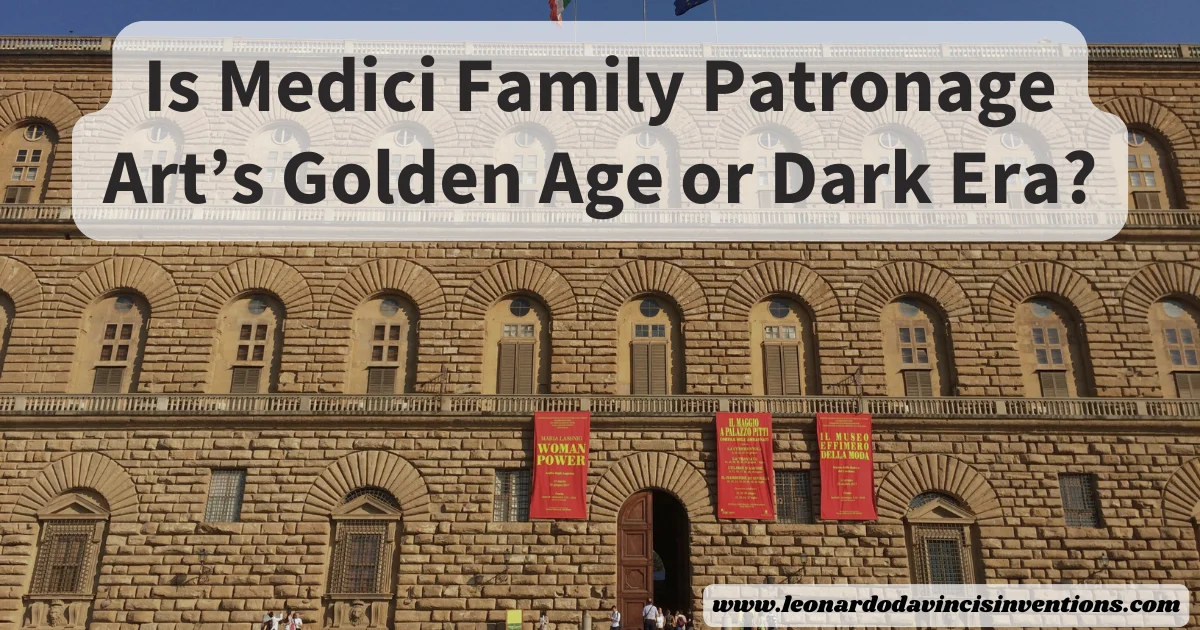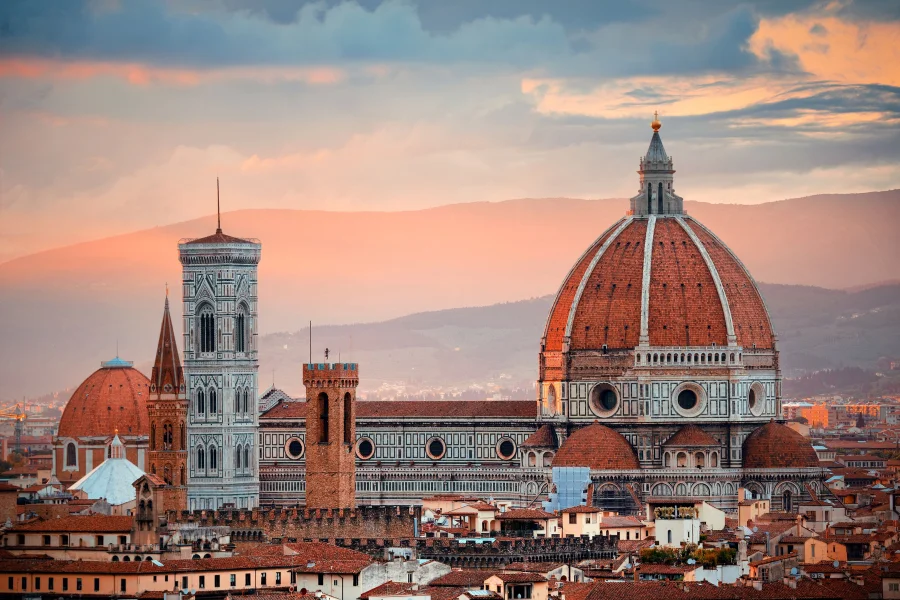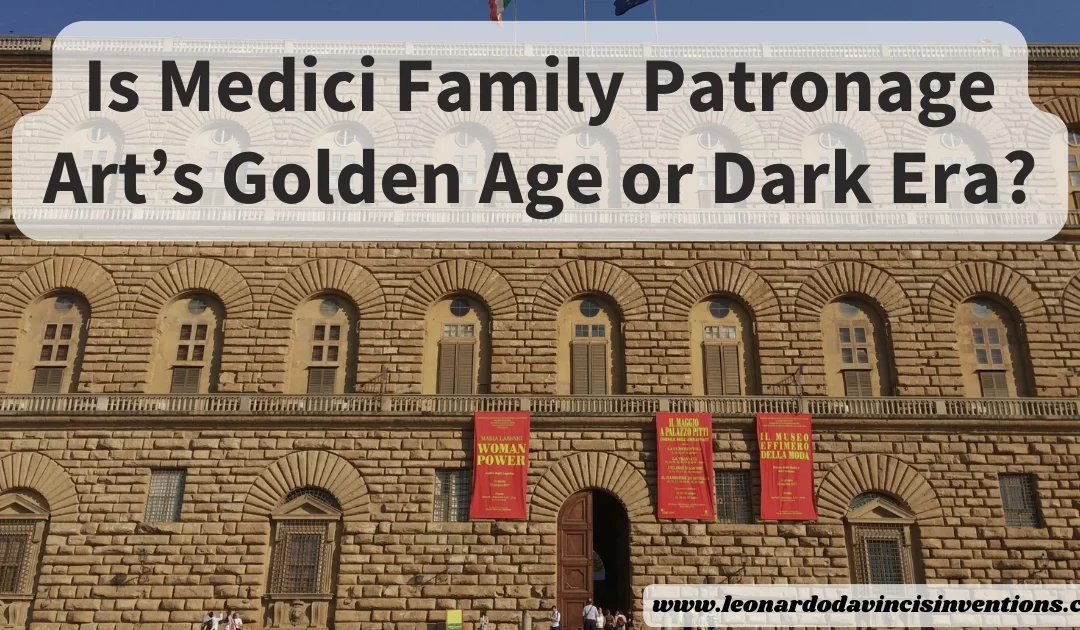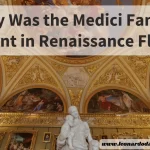
Medici family patronage changed the art world and shaped the Renaissance. The impact is still debated today.
Some people feel lost trying to decide if this support led to art’s golden age or if it created problems that still echo in modern times. You’ll learn about the Medici’s contributions to the arts and how their influence continues to shape people’s perceptions of art and power today.
The Medici became famous for using their wealth to support artists, writers, and thinkers in Florence.
Their patronage enabled many of the most renowned works of Renaissance art, helping to transform Florence into a cultural and creative hub.
This power allowed them to control art and the lives of the people who depended on their approval and money.
The Power and Influence of Medici Family Patronage in Renaissance Florence
Medici family patronage transformed Florence into a thriving cultural and artistic center. The family’s wealth, support of artists, and political strategies raised the city’s reputation throughout Europe.
Banking, Wealth, and the Medici Dynasty’s Rise to Power
The Medici family amassed power through a robust banking empire in Renaissance Florence. This financial network enabled them to accumulate substantial wealth and influence European commerce.
They used their banking success to become the unofficial rulers of Florence. Banking provided the Medici family with the means to fund art, architecture, and education.
The dynasty’s growing influence enabled them to commission grand buildings and support the city’s leading scholars and artists. Their wealth also enabled the family to lend money to popes and monarchs.
These connections spread Medici power beyond Florence. The family gained a voice in European politics and the church.
Political Influence Through Art and Patronage
Art as a tool for power played a key role in the Medici influence. The Medici strengthened their social and political position in Florence by funding Renaissance masterpieces and sponsoring talented artists.
Family figures like Cosimo and Lorenzo de’ Medici supported artists such as Michelangelo, Botticelli, and Leonardo da Vinci. This sponsorship created a unique link between politics and creativity.
Many public works commissioned by the Medici helped promote the family name and ideals. Medici family patronage often acted as propaganda, shaping how citizens viewed their leaders.
The visual splendor of Florence during this period reflected the Medici’s deep investment in culture and governance.
Patronage and Social Status: Shaping Florentine Society
Patronage and social status were closely connected in Florence. Wealthy Medici family members leveraged their support of artists and intellectuals to gain respect and social standing within society.
Investment in education and learning helped establish Florence as a leading city of humanism and innovation. The Medici shaped cultural history by funding schools, libraries, and churches.
Through their ongoing patronage, the family secured a lasting legacy. Their deep involvement in art, architecture, and religion shaped Florence’s identity and social structure for generations.
Medici Family Patronage of the Arts: Innovation, Legacy, and Controversy

The Medici family’s patronage shaped Florence by investing in art, supporting renowned artists, and influencing society and politics. The impact of their sponsorship continues to spark debate about the relationship between power, creativity, and legacy.
Funding Renaissance Masterpieces and Artistic Innovation
The Medici family’s wealth from banking enabled them to invest substantial funds in every aspect of Florentine cultural life. They sponsored public sculptures, buildings, and paintings that transformed the city into a center for artistic innovation.
They encouraged creativity and technical progress by commissioning works from the best minds. Their funding was not limited to visual arts.
The Medici also supported scholars, writers, and scientists, helping promote humanist ideals during the Renaissance. Many projects, such as the dome of Florence Cathedral, demonstrated the connection between art, architecture, and civic pride.
This deep involvement created a Florentine golden age of learning and discovery. For more information on how the Medici family supported the arts, see how they contributed to the Renaissance art movement.
Relationship with Michelangelo, Botticelli, and Leonardo da Vinci
The Medici family formed strong alliances with groundbreaking artists. Michelangelo grew up in their household and received early commissions that helped launch his career.
Medici patronage meant steady work, resources, and a creative environment for Sandro Botticelli and his peers. Sandro Botticelli created numerous works for the family, including the famous masterpiece “The Birth of Venus.”
Leonardo da Vinci also worked in Florence, benefiting from the Medici’s social network and political power. These relationships demonstrate how the Medici acted as art patrons and influencers, shaping taste and trends throughout Italy.
Their support was instrumental in the careers of these legendary artists.
The Legacy of Medici Sponsorship in Art and Politics
The Medici family’s patronage left a profound legacy in art and politics. By tying art to power, they used masterpieces to reinforce their authority and project nobility.
Their influence reached far beyond Florence, affecting Europe’s papacy, education, and even governance. Medici’s support of artists and scholars shaped society and political structures.
Their sponsorship model set a standard for future rulers and noble families. To explore their impact on culture and politics.
The Dual Impact: Art’s Golden Age or a Dark Era?
Medici family patronage transformed Florence into a powerhouse of creativity, politics, and religion. Support from artists and scholars led to major innovations in art, but it also raised questions about power and control during the Renaissance.
Religion, Papacy, and Medici Popes’ Cultural Governance
The Medici family dominated Florence religiously and politically for generations. Their banking empire and wealth gave them unrivaled access to church leadership.
Three Medici became popes—Leo X, Clement VII, and Leo XI—reshaping the role of religion in society and art. Architects and artists created stunning churches and religious works through the Medici popes’ patronage of religion.
Patronage also brought greater power to the family, solidifying its political influence through art and culture.
Education, Learning, and the Promotion of Humanist Ideals
The Medici family valued humanism, funding Renaissance masterpieces and supporting thinkers like Marsilio Ficino and Pico della Mirandola. Cosimo de’ Medici sponsored the revival of Plato’s works.
Lorenzo de’ Medici backed scholars and artists, including Leonardo da Vinci and Botticelli. This investment helped build educational institutions and libraries in Florence, fostering learning and creative growth.
Education also became a status symbol for nobility. The focus of art and learning shifted from the church to a broader part of society.
The Medici’s Impact on Western Civilization: Innovation or Power and Propaganda?
Under the patronage of the Medici family, Florence experienced a golden age of innovation in painting, sculpture, and architecture. Notable projects, such as Michelangelo’s David and the Florence Cathedral dome, were possible due to Medici sponsorship and investment in commerce.
The dynasty’s use of art as propaganda was clear. The family displayed wealth, power, and control by commissioning public works and portraits.
Their sponsorship often blurred the lines between true creativity and political messaging, leading to debates on the Medici’s legacy in shaping cultural history and Western civilization.
Frequently Asked Questions
The Medici family’s patronage transformed art and politics in Renaissance Florence. Their influence shaped the careers of famous artists, strengthened their power, and left a lasting mark on European culture.
What did the Medici family patronage?
The Medici family supported artists, architects, and scholars throughout Florence. They funded the creation of churches, public buildings, sculptures, and paintings, helping to spark the Renaissance.
Their patronage also included libraries, academies, and scientific projects.
Who was commissioned by the Medici family?
Notable artists such as Michelangelo, Botticelli, and Leonardo da Vinci received commissions from the Medicis. They also supported architects like Brunelleschi and Donatello.
Many of these artists created some of their most significant works under the guidance of the Medici.
Who is the patron saint of the Medici?
Saint Lawrence is considered the patron saint of the Medici family. In his honor, they built the Basilica di San Lorenzo in Florence.
The church became a burial site for many members of the family.
What result did the Medici hope to achieve with their arts patronage?
The Medici family sought to enhance their political influence by fostering the arts. Their investments enhanced Florence’s reputation as a cultural and educational hub.
Patronage also helped display their wealth, taste, and influence to rivals and citizens alike.
Why was the Medici family corrupt?
The Medici family faced accusations of corruption in banking, politics, and favoritism. Their use of wealth to gain influence in the church and government led to criticism.
Some saw their methods as manipulative and self-serving.
How does the Medici family have so much money?
The Medici wealth came from banking and commerce. Their bank was one of the most successful in Europe during the 15th century.
According to Britannica, profitable trade and investments helped the family become leading financiers in Florence and beyond.
Are there any Medicis alive today?
No direct male descendants of the Medici family remain. The main family line ended in the 18th century.
Some people claim distant connections, but no current heirs to the Medici name or fortune exist.
What did the Medici serve as patrons?
The Medici patronized painters, sculptors, architects, and scholars and supported the building of churches, public spaces, and art collections.
Their support helped make Florence a major cultural center in the Renaissance, as discussed by the Smithsonian Associates.
How did patronage affect the Renaissance?
Medici patronage led to the creation of many masterpieces. It allowed artists to work on ambitious projects and experiment with new techniques.
The culture of patronage also fostered competition between artists and helped spread Renaissance ideas throughout Europe.
How did the Pope reward the Medici?
Members of the Medici family received important positions within the Catholic Church.
Some became popes themselves, such as Leo X and Clement VII.
These roles gave the family more power and influence in religious and political affairs.



 Leonardo Bianchi,
the creator of Leonardo da Vinci's Inventions.
Thank you for visiting
Leonardo Bianchi,
the creator of Leonardo da Vinci's Inventions.
Thank you for visiting